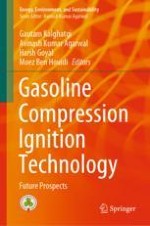2022 | OriginalPaper | Buchkapitel
6. Opposed-Piston Gasoline Compression Ignition Engine
verfasst von : Fabien Redon, Laurence J. Fromm, Ashwin Salvi
Erschienen in: Gasoline Compression Ignition Technology
Verlag: Springer Nature Singapore
Aktivieren Sie unsere intelligente Suche, um passende Fachinhalte oder Patente zu finden.
Wählen Sie Textabschnitte aus um mit Künstlicher Intelligenz passenden Patente zu finden. powered by
Markieren Sie Textabschnitte, um KI-gestützt weitere passende Inhalte zu finden. powered by
